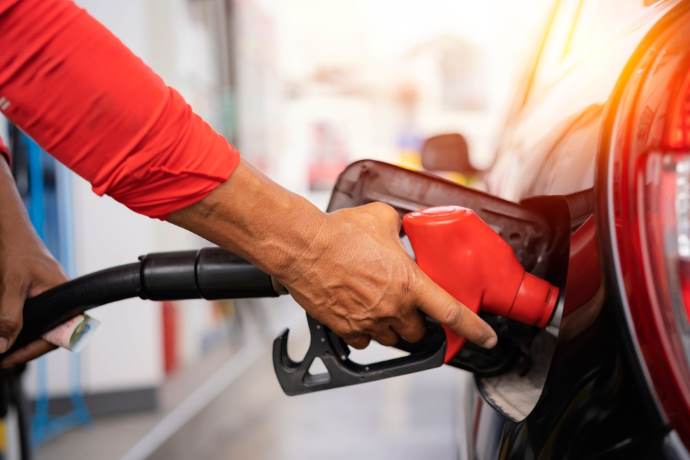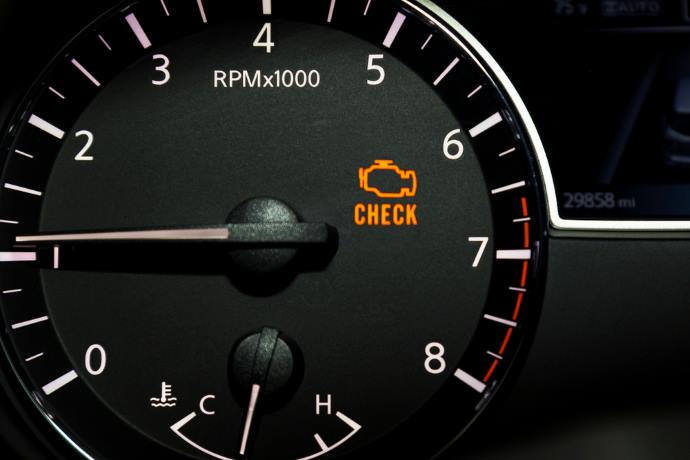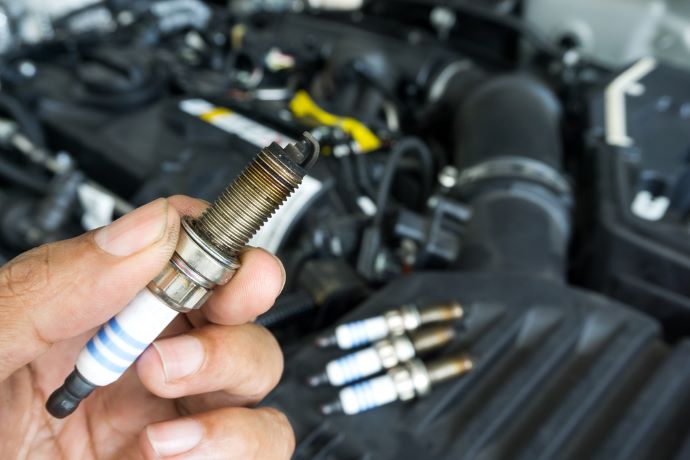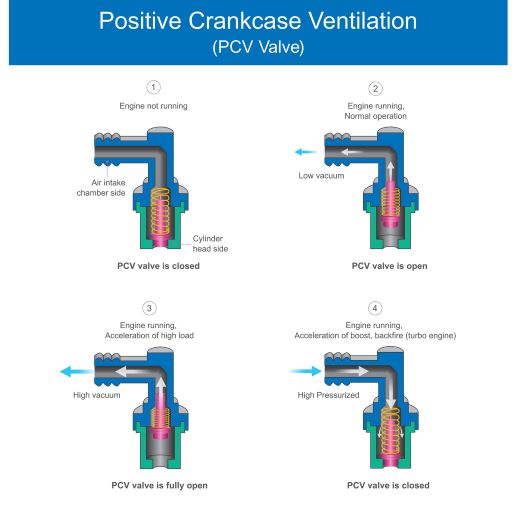Chevrolet 5.3 engines have a PCV valve located at the bottom of the engine.
It can malfunction at times and cause a variety of issues, such as check engine light warnings, poor fuel economy, rough idle, valve leakage, etc.
Therefore, it’s important to identify whether your PCV valve is faulty or not.
In this article, I have discussed what is a PCV valve, what are the common problems of a PCV valve and how to replace it.
What is a PCV Valve?

A Positive Crankcase Ventilation (PCV) valve intercepts oil sludge from clogging up an engine and protects the environment from harmful emissions.
A crankcase holds the motor oil and is located below the engine.
Gases are emitted from the exhaust system when fuel burns in the engine.
But sometimes, few of these gases enter the piston and crankcase.
The gases mix with the motor oil in the crankcase and create oil sludge.
This oil sludge harms vehicle parts badly and affects the environment when emitted through the exhaust.
A PCV regulates these gases and pushes the gas produced in the crankcase to engine combustion chambers for burning.
In this way, a PCV valve protects engine parts and the environment
9 Chevy 5.3 PCV Valve Problems
PCV valve controls the emissions of crankcases.
Typically, a PCV valve lasts over 60,000 miles.
As soon as it reaches 20,000 miles, various problems arise.
A faulty PCV valve’s common problems are reduced fuel economy, leaks, warning lights, abnormal smoke, rough idle/acceleration, and lean or rich mixture. .
Let’s take a closer look at the problems in more detail.
1. Reduced Fuel Economy

Fuel economy decrease is the major problem with bad PCV valves.
When the valve fails to release gases from the crankcase, it increases pressure in the crankcase.
Due to high pressure, the gases merge with the motor oil and produce thick sludge.
This oil sludge will decrease fuel mileage and cause damage to the engine.
2. Unwanted Leakage
If the PCV valve fails to release gases properly, the gases create high pressure in the crankcase.
The pressure is shared with the cylinders and creates several leakages.
These leakages also become a reason for bad fuel economy.
So, check whether the PCV valves are blocked if you find large oil leaks on your cylinders.
3. Check Engine Light Illuminates

The check engine light function in modern vehicles is available in the Electronic Control Module (ECM).
If there is any problem with the engine, the light usually appears.
Some trouble codes are usually related to the faulty PCV valve.
You need an OBD2 scanner to identify the trouble code.
- P052E- Related to PCV valve performance
- P0300- Indicates one or more cylinder misfire detection
- P053A- PCV heater control circuit or open
- P0171- indicates fuel system is too lean
When the PCV valve fails, it will cause severe problems with the engine.
To diagnose the problem, the check engine light illuminates.
As soon as you see the warning light, take the necessary steps.
Checking the PCV valve is one of those steps.
4. Rough Idle
A PCV valve manages the airflow between the intake manifold and the crankcase.
If the PCV valve is broken, it may be stuck open or closed.
Both situations will create problems.
A stuck open PCV valve allows too much air to enter the manifold.
Which leads to produced oil sludge.
If the valve is stuck closed, it will increase pressure in the crankcase and cause leaks, idle RPM, and rough idle.
2005 Chevy Silverado PCV valve problems are the same.
Users reported that their 2005 Chevy Silverado PCV valve was sticking open and pulling out oil from the engine.
Check out the PCV valve when you have high idle RPM or rough idle problems.
5. Lean or Rich Mixture
We already said that if a PCV valve is wrong, it shows the same sign as an intake manifold leak.
Air-fuel lean mixture symptoms will rise.
Sometimes, unusual white or grey smoke is emitted from the exhaust system because of the rich mixture.
The smell of petrol may also be felt because of the air-fuel mixture.
Engine misfire is another symptom of a lean or rich mixture.
6. Engine Misfiring

If a PCV valve fails, the engine causes misfiring because of the lack of fuel.
50% to 60% of fuel from the air-fuel mixtures returns to the engine combustion chamber because of the PCV valve.
A faulty PCV valve causes fuel leaks and engine misfires due to lack of fuel.
The lean or rich mixture also causes engine misfiring.
7. Rough Acceleration
A malfunctioning PCV valve causes an air-fuel mixture.
And the wrong fuel mixture causes rough acceleration at high or low RPMs.
While it is a rare problem, it has been reported by some users, so it is mentioned as well.
8. Abnormal Smoke
It is the most common symptom of a faulty PCV valve.
When the PCV valve fails, crankcase motor oils flow into the combustion chamber.
As a result, the fuel burns and emits blue smoke from the exhaust system.
The lean or rich mixture also emits white or black smoke from the exhaust.
Abnormal smoke is a major sign of a faulty PCV valve, so it is important to check the PCV valve in this case.
9. Reduced Vehicle’s Overall Performance
A faulty PCV valve causes an air-fuel mixture, reducing fuel economy.
A faulty PCV valve fails to release gases from the crankcase, resulting in increased pressure.
High pressure caused damage to the engine and cylinder of your engine.
Consequently, the vehicle’s overall performance decreases.
Solution of a Bad PCV Valve
If you find any problems mentioned above, test the PCV valve.
How to Check PCV Valve at Home
Here are the 03 easy methods to check whether a PCV valve is working correctly.
Method: 01
- Pull out the PCV valve from its cover
- Make sure that the valve hose is attached to it.
- Now, put your finger over the opening point of the hose.
- If the PCV valve works properly, a strong suction will be felt.
Method: 02
- Pull out the cap and put a rigid piece of paper on the opening end of the valve.
- In a second, the paper will be sucked against the hole if the PCV valve works properly.
Method: 03
- A correct PCV valve should rattle when it is unobstructed.
- In the other case, a faulty valve rattle will be hazy or nonexistent.
After testing the PCV valve, if you find any problem with it, then the most appropriate solution is to replace the PCV valve.
Many mechanics suggest cleaning the PCV valve as a solution.
But this step does not give you a long-term solution, and you will face other problems soon.
Since the PCV valve is cheap, it would be ideal if you replaced it.
How Much Does It Cost to Replace A PCV Valve?
In the USA, it costs you $150 to $220 to replace a PCV valve, including labor costs.
But if you can replace the PCV valve by yourself, it costs you less, and you can cover the cost from $30 to $70.
But if your PCV valve is under the manifold (available in some vehicles), I suggest avoiding the replacement.
Because it will be difficult to replace.
In that case, you can seek mechanical help.
How to Replace a PCV Valve
Here are the 07 following steps for replacing a PCV valve-
Step 01: According to your owner manual, locate your PCV valve.
Step 02: The valve is attached to a hose. Ensure the hose is in working condition; if it is cracked or spongy, it should be replaced.
Step 03: Pull out the valve. It will be easy to remove if the valve is placed with a rubber grommet, but some valves need to be unscrewed.
Step 04: Replace the grommet if it is worn or damaged.
Step 05: Install the new valve. Screw it if needed.
Step 06: Connect the hose to the valve.
Step 07: Start the engine again to check the PCV valve.
The trick works on the 2008 Silverado PCV valve replacement.
You can also watch the video.
FAQs
What are the symptoms of a bad PCV valve Chevy Silverado?
A faulty PCV valve in a Chevy Silverado will show the following symptoms:
- Decrease engine performance
- Oil leaks
- Reduced fuel efficiency
- Always oil level found to be low
- Contaminated or clogged filter
Can I drive without a PCV valve?
As you know, PCV valve is an important component, it is necessary to drive with PCV valve.
Driving without PCV valve damages the engine and results in a costly repair.
That’s why, always drive with a functioning valve.
What happens if a PCV valve is blocked?
The engine seals and gaskets are damaged if a PCV valve is blocked.
A PCV valve helps to escape harmful gases and prevent engine leaks.
When a PCV valve becomes faulty or blocked, it creates pressure in the crankcase.
As a result, oil contamination and oil leaking started and ultimately damaged the engine.
What is the life expectancy of a PCV valve?
In my personal experience, I recommend to replace the Chevy Silverado PCV valve every 35,000 to 45,000 miles.
Because the PCV valve’s performance degrades after this period and causes poor engine performance and fuel economy.
However, if the PCV valve fails for any other reason, replace it as soon as possible.
Final Words
Chevy 5.3 PCV valve problems are easy to find out.
We have discussed the basic 09 symptoms of a faulty PCV valve.
If you find any of the symptoms mentioned above in your PCV valve, replace the valve to avoid further problems.
Read more:

